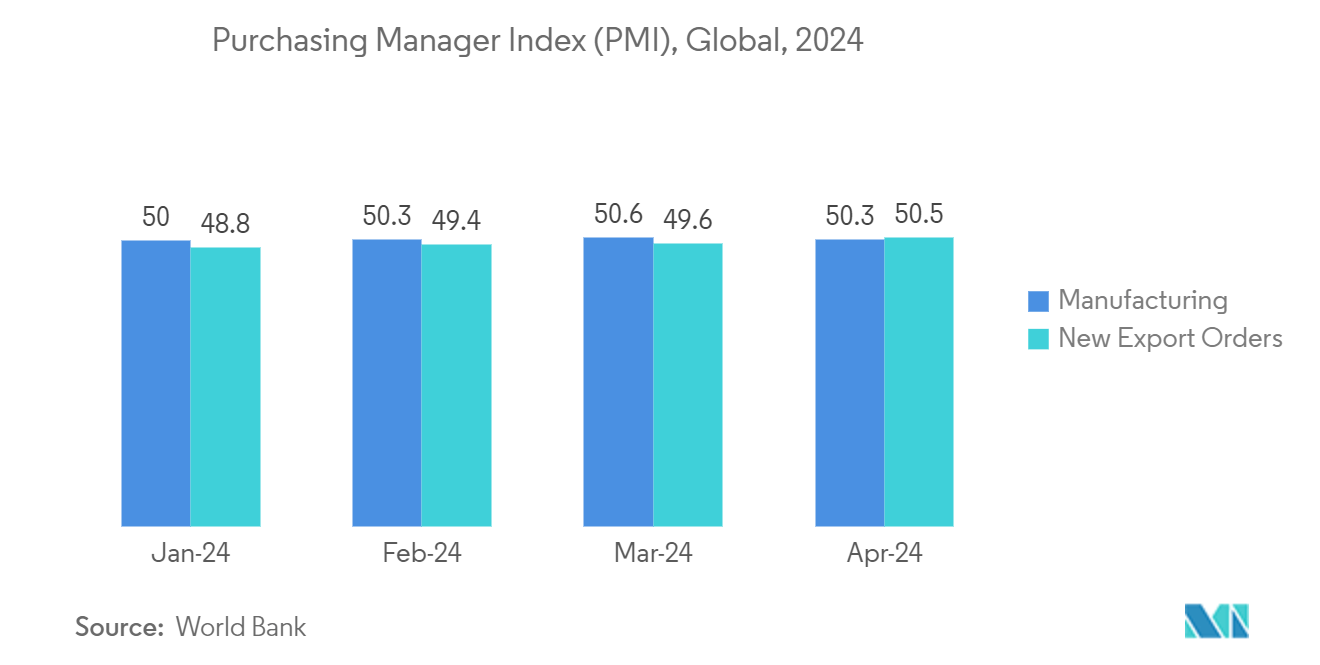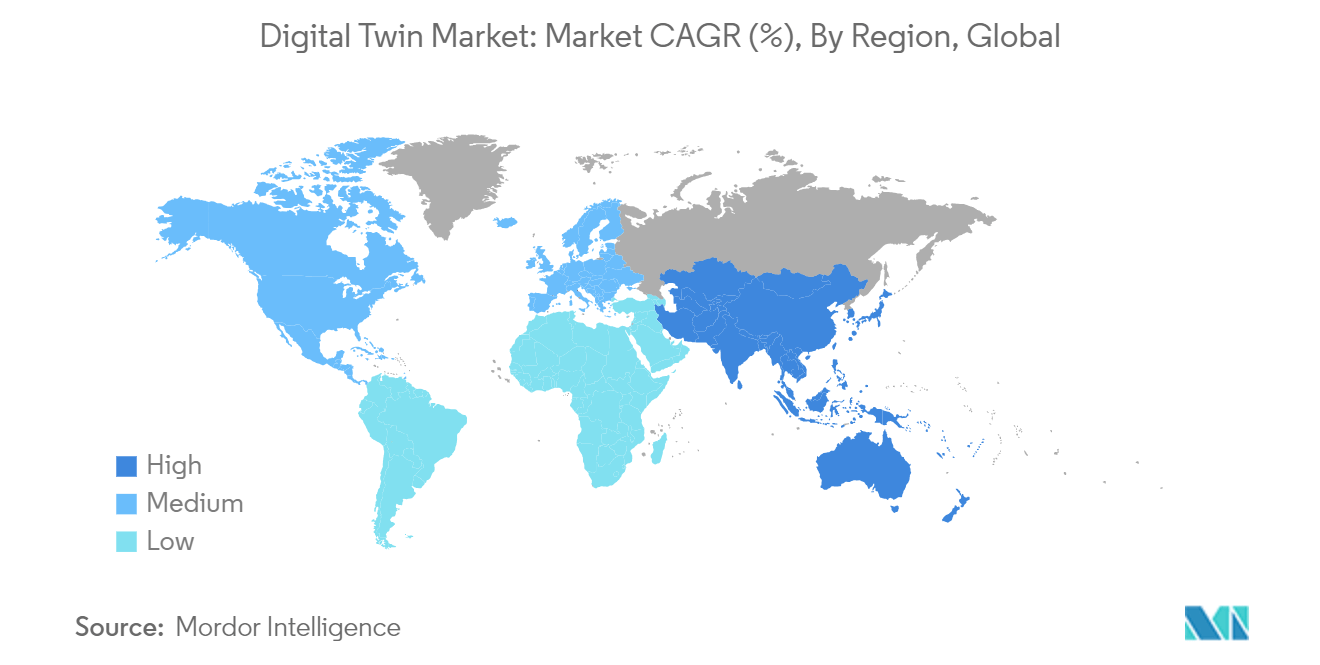Market Trends of Digital Twin Industry
Manufacturing to be the Largest Application
- Digital twins are used throughout the life cycle of a product, ranging from design and development to production and after-sales service. This allows manufacturers to improve products and processes continuously based on real-time feedback. By forming digital replicas of machinery and equipment, manufacturers can predict potential failures and schedule maintenance before issues arise, minimizing downtime and extending the life of assets. Manufacturers can reduce the cost and time associated with assembling, installing, and validating factory production systems using digital twins replicating the product and production systems.
- The rapid spread of Internet of Things (IoT) devices and advancements in artificial intelligence (AI) enable more detailed and real-time data collection, crucial for creating accurate digital twins. According to GSMA, North America's total number of consumer and industrial IoT connections is forecast to grow to 5.4 billion by 2025.
- In addition, according to Ericsson, in 2023, the number of short-range IoT devices reached 12.39 billion worldwide. This number is forecast to increase to 25 billion by 2027. Such growing IoT technologies may develop the market for digital twins.
- As manufacturing complexity and demand for more advanced technology grows, it has become more difficult for companies to design, verify, and validate products of semiconductor chips. Digital twins enable faster and more complete IC verification and validation cycles, leading to significantly higher quality end-products and faster market time. For example, Siemens uses digital twins' technology for IC verification and validation.
- Furthermore, the manufacturing sector's growth may further propel the market's demand. According to the Dallas Fed, in February 2024, global industrial production, excluding the United States, increased by 1.1% compared to the same time in the previous year, based on three-month moving averages. Furthermore, according to the World Bank, in April 2024, the global PMI amounted to 50.5 for new export orders and 50.3 for manufacturing.

North America Holds Largest Market Share
- With the continuous integration of the digital realm into the physical world, digital twin technology has become a crucial tool for transforming industries and operations. Sectors such as manufacturing, aerospace, oil and gas, automobile, and others in the area effectively utilize the advantages of digital twin technology. The rise in adoption rates and the active involvement of vendors in the regional market are projected to propel the market's expansion.
- For instance, federal agencies in the United States have begun exploring the applications of digital twins, showcasing a significant embrace of this technology. Recent reports from Accenture reveal that various entities such as The Air Force, Navy, the Department of Energy, the Department of Agriculture, and the National Oceanic and Atmospheric Administration have introduced the development of digital twins or shown keen interest in doing so. These advancements indicate a growing recognition within the US government of the advantages that digital twins can offer.
- Moreover, the region's manufacturing sector is expected to drive the demand for digital twin technology at a significant rate. Digital twin technology allows manufacturers to develop virtual replicas of machine tools prior to their physical fabrication. This facilitates testing and prototyping in a digital setting, empowering engineers to identify and resolve potential issues before the start of real production. The increasing investments in the region's manufacturing sector and extensive production capabilities will enable the market to grow significantly during the forecast period.
- Canadian manufacturing, construction, and automotive sectors are witnessing a substantial adoption of digital twins. These industries leverage digital twin technology to assess the performance of their physical assets, pinpoint areas for enhancement, and ultimately achieve more favorable results. Furthermore, the healthcare sector in Canada is increasingly embracing digital twin technology, poised to propel the market's growth.
- Moreover, the nation presents substantial growth potential across multiple sectors and is poised to bolster its market share significantly in the coming years. With escalating investments in the aerospace and O&G industries, the market is set to capitalize on these opportunities. Furthermore, the growing attention on renewable energy sources within the power sector is primed to propel the market’s growth.


